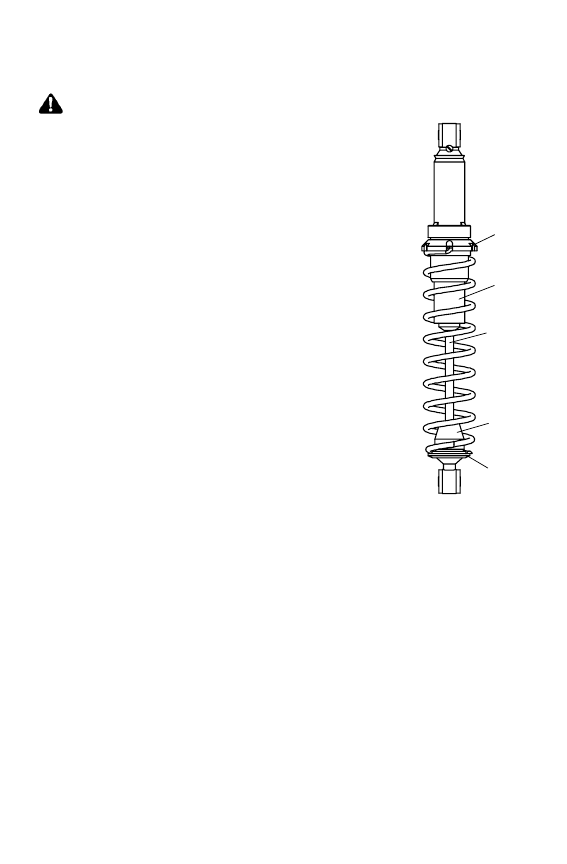Snowmobile Polaris 700 Classic / 700 touring (2006 year). Instruction - part 10

40
THE PERFECT FIT
IQ Front Suspension Adjustments
WARNING
Always verify ski alignment before making
adjustments to the IFS. See page 104 to check
alignment. If the skis are misaligned, see your
dealer, as the camber adjustment may also be
affected.
The tension at which the shock coil spring is set is
called spring preload. For the best ride, the spring
preload should be set as low as possible to use the
full travel of the ski shock, with occasional light
bottoming. To determine if your machine is using
full travel of the ski shock, push the jounce bumper
down as far as it will go on the shock rod and test
ride the machine. The bumper will move up on the
rod in direct relation to the amount of travel. If the
shock travel is full, the bumper will be seated at the
top of the shock.
Shock Absorber Components
1. Retainer
2. Jounce Bumper
3. Shock Rod
4. Body
5. Spring Preload Adjuster Nut
1
3
2
4
5